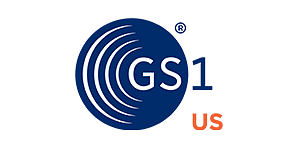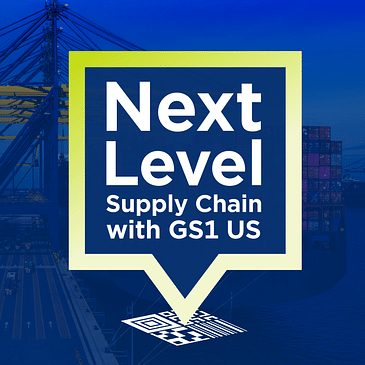Celebrating 50 Years of the Barcode, hosts, Reid Jackson and Liz Sertl speak to an impressive lineup of industry experts, direct from Orlando, at GS1 US’s yearly conference, Connect. They chat with:
-
Dave DeLaus, CIO at Wegmans, dissects the complexities of integrating new technologies to enhance consumer experience and shares how Wegmans is tackling the challenges of implementing 2D barcodes for better product traceability.
-
Sean Murphy from Cencora demystifies the Drug Supply Chain Security Act and emphasizes the necessity of unique serial numbers and digital backpacks for pharmaceutical products to ensure safety and compliance in the healthcare industry.
-
Andrew Meadows is the founder and CEO of BL.INK introduces the intriguing world of 2D barcodes and digital resolvers. Learn how BL.INK’s platform, BL.INK CXP revolutionizes consumer engagement by providing personalized experiences and enhancing data privacy.
-
JW Franz from Barcoding Inc. emphasizes the importance of supply chain automation innovation and the future of barcoding, including RFID and computer vision technologies.
They all speak on the gradual implementation of new technologies, the strategic importance of 2D and QR code barcodes, and the transformative potential of computer vision in inventory management. The episode also covers the crucial role of standardization and regulatory compliance in healthcare and explores the exciting advancements paving the way for smarter, safer, and more efficient supply chains.
Key takeaways:
-
Discover how the integration of 2D barcodes and QR codes, paired with advancements in computer vision, is revolutionizing retail and supply chain management for enhanced consumer experiences and operational efficiency.
-
Explore the significant impact of the Drug Supply Chain Security Act and the digital backpack concept on pharmaceutical traceability, with insights from Sean Murphy of Cencora on how serialization ensures compliance and safety.
-
Learn about BL.INK’s innovative 2D barcode technology and digital resolvers, with Andrew Meadows explaining how these tools enable personalized consumer interactions and secure data privacy, driving a more direct and meaningful brand engagement strategy.
Jump into the Conversation:
[00:00] Welcome to Next Level Supply Chain
[00:48] Coming to you from GS1 Connect 2024 in Orlando
[02:45] Introducing Dave DeLaus, CIO at Wegmans
[03:42] Hot Topics with Wegmans
[04:47] Some insights on use of the 2D barcode at Wegmans
[06:01] How you can interact with the 2D barcode differently for your customer
[10:17] Introducing Sean Murphy with Cencora
[12:14] Cencora’s use of EPCIS or Electronic Product Code Information Service
[14:04] Leveraging RFID technology
[14:53] Focusing on DSCSA to create a smart, safe, and sustainable supply chain
[16:48] 2D barcodes in the pharmaceutical and healthcare industry
[18:49] Introducing Andy Meadows, founder and CEO of BL.INK
[19:25] BL.INK platform and digital resolvers
[24:22] Advising product manufacturers about BL.INK
[25:37] Andy’s thoughts on the future of 2D barcodes
[27:53] Introducing JW Franz from Barcoding Inc.
[29:07] JW’s biggest takeaway fro attending Connect
[29:48] Barcoding Inc’s current focus
[30:28] JW’s thoughts on the future of RFID and 2D barcodes
Connect with GS1 US:
Our website - www.gs1us.org
Connect with the guests:
Dave DeLaus - CIO, Wegmans
Sean Murphy - Senior Manager of Manufacturing Operations, Cencora
Andrew Meadows - Founder & CEO, BL.INK
JW Franz - IoT Automation Solution Director, Barcoding Inc.



